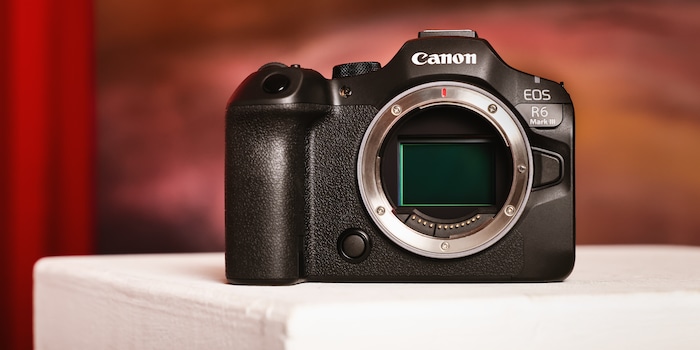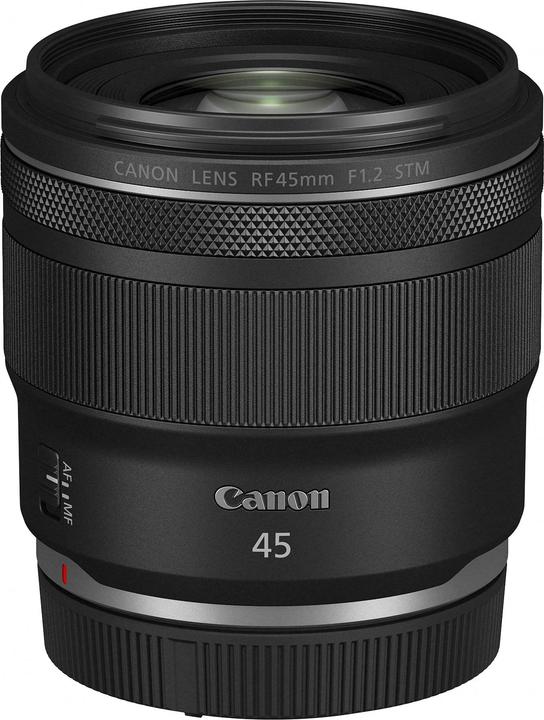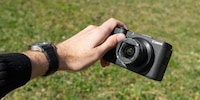

Canon launches EOS R6 Mark III and a fast, affordable lens
Compared to its predecessor, the new Canon camera offers significantly more in terms of video. The continuous shooting function has also been improved. Also new: a lens that should interest a lot of people.
Canon presents the successor to the now three-year-old EOS R6 Mark II. The R6 III has a new sensor, namely the same as in the EOS C50 video camera presented in September. This increases the resolution from 24 to 32.5 megapixels. The new sensor is also backside exposed, which should mean an improvement in light sensitivity.

A very good sensor for videos
The resolution is just not enough for 8K. The R6 III offers 7K as the highest video resolution, in RAW format if required. 7K corresponds to 6960 × 3672 pixels or 6960 × 4640 pixels with Open Gate, i.e. when the entire sensor surface is used - the videos therefore have an aspect ratio of 3:2. The maximum frame rates for 7K are 60 frames per second (FPS), although only 30 FPS can be achieved with Open Gate. The R6 III achieves 4K in oversampling quality with 60 FPS, without oversampling 120 FPS. These values match those of the Canon EOS C50. However, unlike the C50, the R6 III does not have active cooling and is therefore likely to overheat more quickly.

Source: Canon
The new sensor is faster and therefore exhibits less pronounced rolling shutter effects than the R6 II. This is not only important for videos, but also when very fast movements are to be photographed with the electronic shutter.
Better continuous shooting function
It's fitting that Canon has improved the continuous shooting function. The buffer memory now holds 150 RAW images or 280 CRAW images. Pre-recording has become more user-friendly: With the R6 III, you can access the individual RAW images directly - with the R6 II, the prerecording continuous images are encapsulated in a video, from which individual frames can then be extracted. Many users found this cumbersome.

Source: Canon
The maximum speed remains at 40 FPS with electronic shutter. Thanks to the lower rolling shutter, this can now also be used in cases where the slower mechanical shutter (12 FPS) was previously used.
In contrast to the C50, the R6 III also offers a built-in image stabiliser. According to Canon, this compensates for up to 8.5 stops of exposure - a very good value. The Canon EOS R6 Mark III is expected to be available from 20 November, with an RRP of 2599 francs or 2899 euros. The R6 II will remain in the range as a cheaper alternative. In order to handle the high data rates, the R6 III no longer only has UHD II card slots, but also a UHD II and a CFexpress slot (type B).
New RF 45mm f/1.2 STM lens
Another new addition to the Canon range is the RF 45mm f/1.2 STM: a fixed focal length that weighs just 346 grammes despite its high speed of f/1.2 and costs just 449 francs or 499 euros (RRP). It is not an L lens, but the image quality is said to be «at least as good» as the EF 50mm f/1.2L USM.
The lens should also be of interest to owners of Canon cameras with an APS-C sensor (R7, R10, R50, R100). On such a camera, it shows a narrower image section that corresponds to 72 millimetres in full-frame format - making it ideal for portrait photography, where a lot of light intensity is required.
My interest in IT and writing landed me in tech journalism early on (2000). I want to know how we can use technology without being used. Outside of the office, I’m a keen musician who makes up for lacking talent with excessive enthusiasm.
From the latest iPhone to the return of 80s fashion. The editorial team will help you make sense of it all.
Show all


